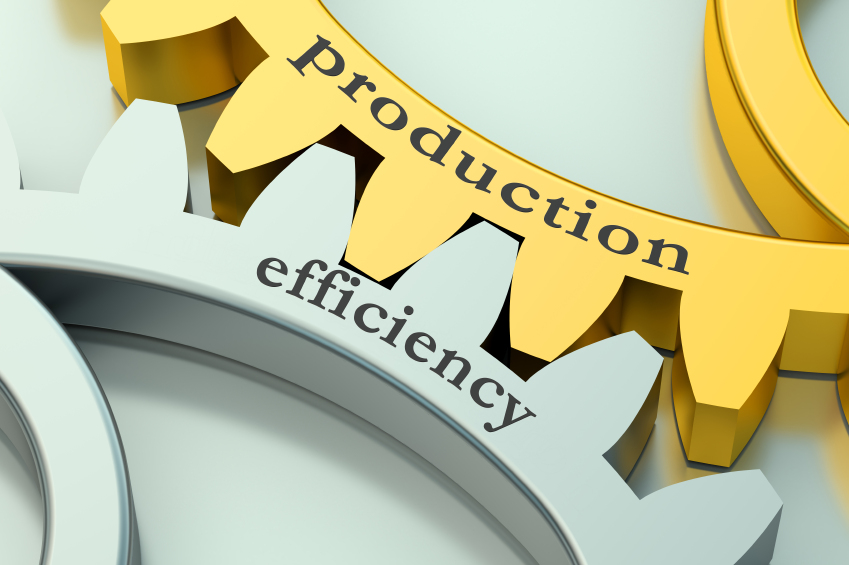
When Boom Times Wind Down, Smart Firms Turn Quickly to Efficiency
In a no-longer-growing market, increasing sales and marketing may actually not be the best way to grow. Making big efficiency gains may be far better.
At the end of every economic growth cycle, midsized companies tend to invest heavily in sales and marketing to steal market share. They realize that a no-longer-growing market won’t raise all boats, including their own. Yet increasing sales and marketing may actually not be the best way to grow in these times. Making big efficiency gains may be far better.
Consider the case of a $50 million logistics and trucking firm that used efficiency to drive growth. The company is a longstanding player at a major U.S. seaport. It provides cross-docking services (unpacking seagoing containers and re-sorting the merchandise into shipments bound for retail distribution centers) and trucking services (130 trucks). It had been successful despite the low margins common in this industry. At the beginning of 2013, a big customer that accounted for 30% of its business decided it would no longer ship from that port, giving the logistics firm only five months’ notice. The logistics firm was stunned, and the founders slashed costs to get back to profitability. They sublet part of their cross-dock, chopped their own pay in half, reduced head count and rolled salaries backward.
It all helped, but it wasn’t enough. The firm needed more revenue fast. However, its sales team had already knocked on the doors of all its high-volume prospective customers, and there was little new business in the offing.
So the firm knocked on a different door: its operations manager’s. The firm’s core competency was efficiency. It had excellent IT systems and a disciplined team, better than its competitors. It began searching for worsening or unsolved problems in the supply chain where it could put its efficiency to use and its attention was drawn to turmoil inside the ports themselves. Ocean carriers were racing to the price point bottom for getting containers over the water. As a result, they were unbundling their offering and dropping their customary management of the “destination dock to consignee’s door” leg of the supply chain. As consignees became increasingly concerned about getting their freight in time, the logistics firm stepped in, utilizing its IT infrastructure and penchant for efficiency to pick up the slack. The firm successfully broadened its business definition and picked up new revenue.
The logistics firm lost some money in 2013, but between the cost cutting and the new slice of the supply chain, was able to break even in 2014. By the end of 2015, revenue and profits were better even than its banner year of 2012. It was able to restore market salaries to employees, and pay all deferred wages to the top team.
After a long economic expansion, most midsized companies have allowed some “fat” to collect. These inefficiencies matter less for smaller companies, or during periods when top line growth is easy to come by. But at the end of the economic growth cycle, focusing on increasing efficiencies is crucial.
Evaluating efficiency in operations can uncover valuable opportunities, as described with the logistics firm above. Yet most midsized firms underinvest in operations leaders. They have too few, or don’t hire a top operations executive with deep experience. While I’m all for promoting from within, most operations leaders who “grew up” in the company don’t have the experience necessary to take operations to the next level of efficiency. Bringing in an outside leader also ensures a “fresh look” at internal assumptions and practices that may be outdated. A strong, well-qualified leader is a must.
Focus on high-volume operations, where even small improvements in productivity will yield big benefits. Measure everything and create visibility for each measure. Some of those measures should be of individual performance, team performance and company performance. Becoming efficient isn’t about “cracking the whip” or risking operational meltdown through underfunding; it’s about smarter processes, automation, planning, and innovation in operations.
Every increase in efficiency will translate into a stronger bottom line, which can be used for acquisitions, for rewarding high-performing employees, or to allow for lower prices. Increased efficiency may also have strategic value and can uncover new opportunities. Companies must get close to customers to fully understand the value chain from the customer’s perspective. From there they can looking for gaps, problems and headaches—all problems they can solve for their customers. Being uniquely positioned to address these needs can yield powerful new avenues for business growth.
You can also read the full story on Forbes. Have some thoughts on this conversation? Feel free to comment online and we’ll keep this timely conversation going.
Tags: business acumen, financial performance, operations, scaling, strate
 Robert Sher is founding principal of CEO to CEO, a consulting firm of former chief executives that improves the leadership infrastructure of midsized companies seeking to accelerate their performance. He was chief executive of Bentley Publishing Group from 1984 to 2006 and steered the firm to become a leading player in its industry (decorative art publishing).
Robert Sher is founding principal of CEO to CEO, a consulting firm of former chief executives that improves the leadership infrastructure of midsized companies seeking to accelerate their performance. He was chief executive of Bentley Publishing Group from 1984 to 2006 and steered the firm to become a leading player in its industry (decorative art publishing).